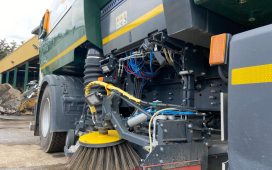In the evolution of warehouse management, few developments have proven as consequential as the systematic approach to vertical storage, and NTL Storage’s pallet racking represents a culmination of decades of industrial innovation applied to the particular challenges of modern logistics. Like the great engineering achievements of the past, these systems emerged not from abstract theory but from the pressing necessity of merchants and manufacturers who found themselves constrained by limited floor space and the relentless demands of commerce.
The Historical Context of Warehouse Storage
To understand the significance of contemporary racking systems, one must first appreciate the conditions from which they emerged. The post-war industrial boom brought with it an explosion of manufactured goods and the corresponding need to store them efficiently. Warehouses, once simple repositories with goods stacked haphazardly upon floors, underwent a transformation as radical as any in industrial history. The introduction of the forklift in the 1920s, followed by the standardisation of pallet dimensions, created the conditions necessary for vertical storage systems to flourish.
NTL Storage’s pallet racking solutions evolved within this broader historical trajectory, shaped by the specific demands of Singapore’s unique geographical and economic circumstances. In a nation where land represents perhaps the most precious commodity, the imperative to build upward rather than outward became not merely advantageous but essential to survival in the competitive logistics marketplace.
The Anatomy of Modern Racking Systems
The structure of industrial storage racks, when examined closely, reveals a sophisticated understanding of physics, materials science, and operational workflow. Consider the fundamental components:
• Upright Frames
These vertical columns bear the weight of entire inventory systems, engineered to precise tolerances that account for load distribution, seismic activity, and the dynamic forces generated by forklift operations.
• Load Beams
Spanning horizontally between uprights, these beams must support concentrated weights whilst maintaining perfect levelness across their length, a requirement that demands both material strength and manufacturing precision.
• Bracing Elements
Diagonal supports that prevent lateral movement and provide the structural rigidity necessary to transform individual components into a unified, stable system.
• Decking Options
From wire mesh to solid steel panels, these surfaces distribute pallet loads and prevent goods from falling through, chosen according to the specific inventory characteristics of each operation.
The engineering principles underlying NTL Storage’s pallet racking designs reflect decades of accumulated knowledge about material behaviour under stress, the patterns of warehouse traffic, and the real-world conditions that distinguish theoretical load ratings from practical applications.
The Singapore Imperative
Singapore’s emergence as a global logistics hub occurred not despite its geographical limitations but, in a paradoxical sense, because of them. The scarcity of land forced innovation in vertical storage solutions that might have developed more slowly in nations blessed with abundant acreage. Singapore’s NTL Storage’s pallet racking systems, therefore, represent adaptations to specific constraints: high property costs, strict safety regulations, tropical humidity, and the need to maximise every cubic metre of warehouse space.
The result has been the development of storage solutions characterised by density and efficiency that exceed standards common in larger nations. Where a European or American warehouse might allocate space generously, Singapore operations have perfected the art of calculated compression, achieving storage densities that would have seemed impossible to earlier generations of warehouse managers.
Operational Considerations and Strategic Planning
The selection and implementation of warehouse racking requires the same careful analysis that military commanders bring to logistics planning. One must consider:
• Inventory Velocity
Fast-moving goods demand immediate accessibility, whilst slow-moving stock can tolerate the reduced access of high-density systems.
• Load Characteristics
Weight, dimensions, and fragility of stored items dictate beam spacing, upright strength, and decking requirements.
• Facility Constraints
Ceiling heights, floor load capacities, and column spacing impose physical boundaries within which systems must be designed.
• Future Scalability
The ability to reconfigure or expand systems as business needs evolve represents a crucial but often overlooked consideration.
The implementation of NTL Storage’s pallet racking demands attention to these variables with the rigour of a scientific investigation. Miscalculations in any dimension can result in inefficiencies that compound over time, transforming initial cost savings into long-term operational burdens.
Safety as Foundation
History teaches us that systems built without adequate attention to safety eventually exact their toll in human suffering and economic loss. The spectacular failures, the collapsed racks and resulting injuries, serve as grim reminders that load limits and inspection protocols exist not as bureaucratic impositions but as hard-won wisdom purchased through past disasters.
Regular inspections, proper training, and immediate repairs represent not costs but investments in operational continuity. The damaged upright left unrepaired, the overloaded beam accepted as temporary expedience, these small compromises accumulate until catastrophe becomes not a possibility but an inevitability.
The Contemporary Landscape
Looking forward, the trajectory of warehouse storage points toward increasing automation, greater integration with inventory management systems, and continued refinement of space utilisation. Yet the fundamental challenge remains unchanged: how to store the maximum quantity of goods in the minimum space whilst maintaining safety and operational efficiency. This challenge, eternal in logistics, finds its most refined expression in systems such as NTL Storage’s pallet racking, where decades of engineering evolution meet the unforgiving demands of contemporary commerce.















